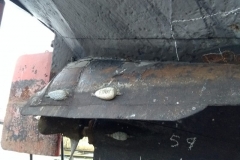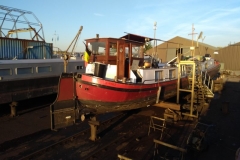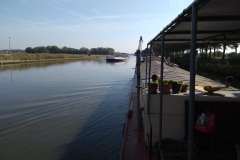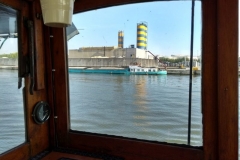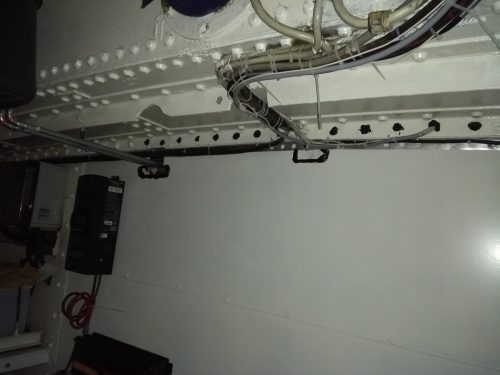19th October 2019 – At 10 o’clock, the surveyor arrived. He had a look at my paperwork, went to see the wheelhouse and the engine room. Then he came back in and started writing. my navigation lights had to be replaced and I need to mount an AIS.
Then we continued on the hull survey. For the first time, I didn’t use a grinding disc but a disc used to remove paint from cars. Since cares are built thin, it doesn’t take metal, just paint. A disc costs around 9 EURO. I bought two discs, and they were each mounted on a grinder. So I could easily swap without having to use a spanner or anything else.
Halfway my ship I ran out on the first disc. With the second disc I didn’t get that far since the surveyor marked more points at the back of the ship. It was understandable since the back of the ship looked very bad. A lot of rust and some deep pitting in the plates. At the end I used a big grinding disc. Once the grinding was finished I walked away and started talking with my neighbours. I didn’t want to know the values of the measuring. Halfway the hold, I did have a look and all the thickness measurements were above 5 mm. Great! The more he got to the back of the ship the happier I became. I didn’t have to remove any interior. Even the engine room was good. The first plate I had to mount was around an old pipe. I could live with it. The next plate was above the tunnel of the shaft. Fine to me. The third and last plate was where I made a hole in the hull. Besides those three plates, I had to weld five rivets. I never had such a good survey in my life!
Part of his recommendations was to clean the waterline thoroughly and protect it well. Something I started doing that evening after I called a few friends and told them the result of the survey.
I am using a Tercoo disc on a drilling machine to remove the rust and old tar. On their website, the company calls it the best thing after sandblasting. It are expensive discs, so I hope it will be worth it.
